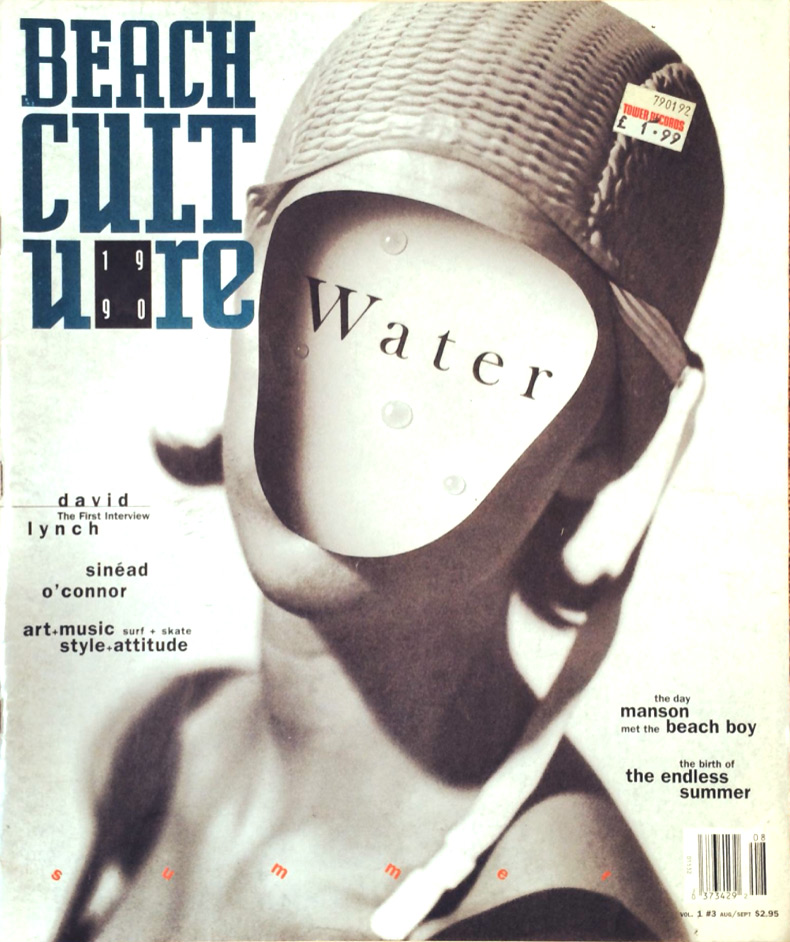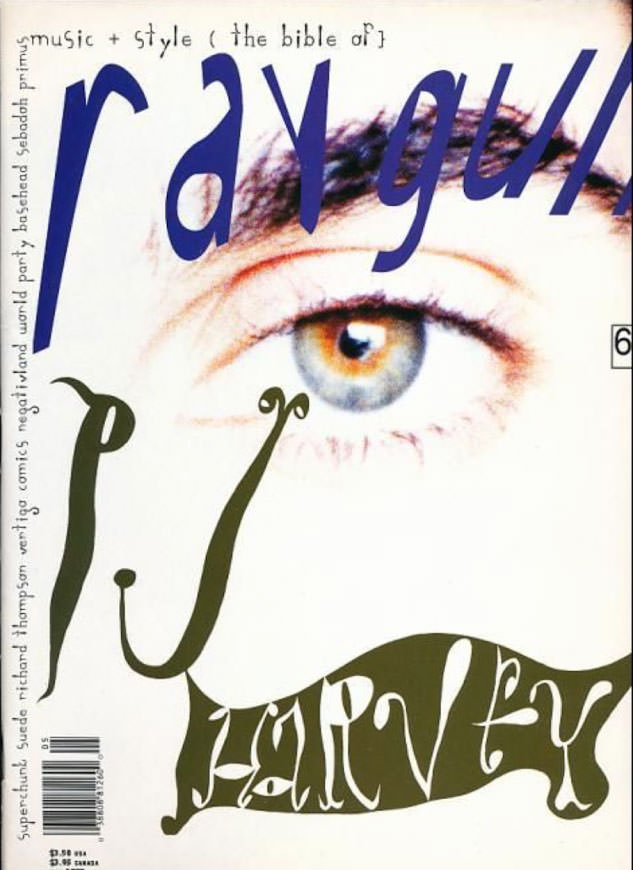Date of Birth: September 8, 1955
Place of Birth: Corpus Christi, Texas, USA
Alma Mater: San Diego State University (BA Sociology)

David Carson is an American graphic designer and art director. He is best known for his innovative magazine design, and use of experimental typography.
He attended Lunada Bay Elementary School in Palos Verdes Estates, California and later Cocoa Beach High School in Florida, where he was class president from 8th to 10th grade. He eventually graduated from Rolling Hills High School in California, followed by San Diego State University with a bachelor of arts in Sociology. He went on to become a teacher at Torrey Pines High School. His most famous student being the pro skateboarder, Tony Hawk. Carson’s first contact with graphic design was in 1980 at the University of Arizona during a two-week graphics course. While teaching at Torrey Pines, Stacy Peralta, a film director friend who he met through their mutual love of surfing and skateboarding, brought Carson to the attention of Transworld Skateboarding magazine. This resulted in a job offer. With no formal training in design, Carson considered Transworld Skateboarding his “schooling in design”.
In 1983, Carson began experimenting with graphic design and found himself immersed in the artistic and bohemian culture of Southern California. He attended the Oregon College of Commercial Art for a couple of months before accepting an unpaid internship with Action Now magazine, known at the time as Skateboarder magazine. That year, he went to Switzerland to attend a three-week workshop in graphic design. The teacher of the workshop, Hans-Rudolf Lutz, became his first great influence. Carson went on to become the art director of Transworld Skateboarding magazine in 1984 and remained in the position until 1988. By the end of his tenure he had begun to develop his signature style, using “dirty” type and non-mainstream photographic techniques. He was also the art director of spinoff magazine Transworld Snowboarding, which began publishing in 1987.

Steve Pezman, publisher of Surfer magazine employed Carson to design Beach Culture magazine in 1989. Beach Culture was a quarterly publication that evolved out of a to-the-trade annual supplement. The commision was based on the recommendation of Surfer editor Paul Holmes and although only six quarterly issues of Beach Culture were produced, the tabloid-sized publication allowed Carson to make his first significant impact on the world of graphic design and typography. His ideas were called innovative even by those who were not fond of his work, in which legibility often relied on readers’ strict attention. For one feature on a blind surfer, Carson opened with a two-page spread covered in black.
After Beach Culture, Carson art directed and designed Surfer magazine for the next two years, before joining Feineman and others as art director of Ray Gun Magazine in 1992. Carson was hired by publisher Marvin Scott Jarrett to design Ray Gun, an alternative music and lifestyle publication. He designed and art directed the magazine for over 3 years, sending a completed issue to be printed when he finished designing it, with nobody else approving his designs before being sent to print. In one issue, he notoriously used Zapf Dingbats, a font containing only symbols as the font for what he considered a rather dull interview with Bryan Ferry. Ray Gun helped raise Carson’s profile as a designer and attracted new admirers to his work. He was featured in several publications at the time such as The New York Times in 1994.
1995 was the year that Carson left Ray Gun to found his own studio, David Carson Design in New York City. In the course of three years, Carson produced work for high profile clients such as Pepsi Cola, Microsoft, Giorgio Armani and British Airways. He also designed work for music acts such as Prince and Nine Inch Nails. In 2000, Carson closed his New York City studio and followed his children to Charleston, South Carolina, where their mother had relocated them. In 2004, Carson was the freelance Creative Director of the Gibbes Museum of Art in Charleston. That year, he also designed the special “Exploration” edition of Surfing Magazine and directed a variety of TV commercials for clients including Budweiser, American Airlines and Xerox.

In 2010, Carson began lecturing at workshops and exhibitions across Europe, South America and the United States. He was invited to judge the European Design Awards in London (DD+A) in both 2010 and 2011, and was the keynote speaker of the Fuse branding conference in Chicago in 2014 and the international creativity festival in Dubai in 2015. Carson continues to lecture throughout the world in addition to his design work.
In 2011 Carson worked as worldwide creative director for Bose Corporation as well as Design Director for the 2011 Quiksilver Pro Surfing contest in Biarritz, France. He also designed the branding for the 2012 Quiksilver Pro in New York City. In 2015, Carson was commissioned to design the 2015–2016 school year publicity material for the Harvard Graduate School of Design.
Carson describes his work as “subjective, personal and very self indulgent”. His layouts feature distortions or mixes of ‘vernacular’ typefaces and fractured imagery, rendering them almost illegible. Indeed, his maxim of the ‘end of print’ questioned the role of type in the emergent age of digital design, following on from California New Wave and coinciding with experiments at the Cranbrook Academy of Art.
Design writer Steven Heller has said, “He significantly influenced a generation to embrace typography as an expressive medium”. Design educator and historian Ellen Lupton said after the release of Carson’s book Trek, “David Carson continues to be one of the world’s most distinctive typographic voices—much imitated, but never matched” (ID Mag.nyc).

David Carson has won over 230 Awards for his work in graphic design, photography, advertising and branding. Some of these awards include:
- Best Overall Design, Society of Publication Designers in New York.
- Cover of the Year, Society of Publication Designers in New York.
- Award of Best Use of Photography in Graphic Design, International Centre of Photography
- Designer of the Year (1998 and 1999), International Centre of Photography
- Master of Typography, Graphic magazine (NY)
- The most famous graphic designer on the planet, April 2004 – London Creative Review magazine (London)
- One of the 30 most influential Macintosh users over the 30-year history of the computer – only two graphic designers were selected, Carson and April Greiman. Apple Inc. (January 2014)
- AIGA medal – 2014
